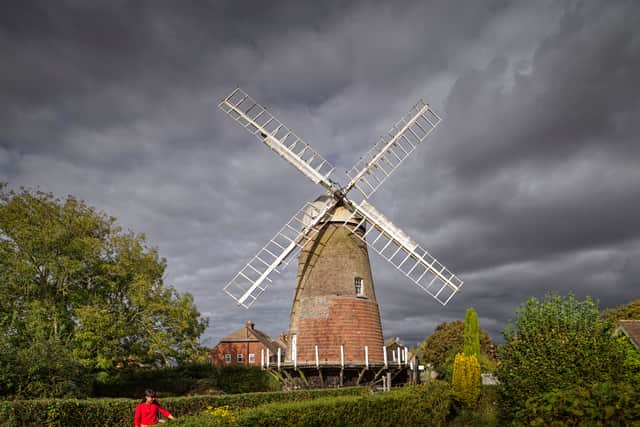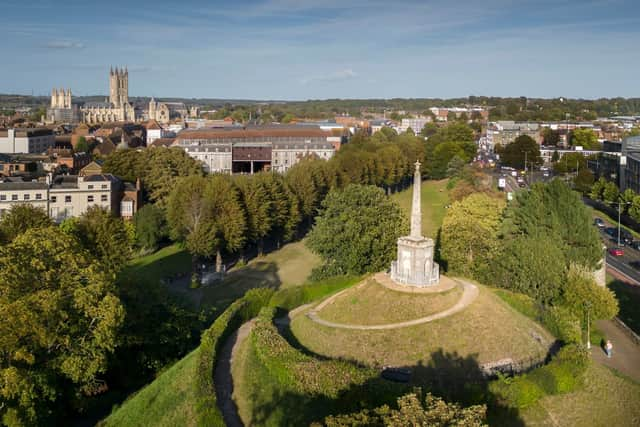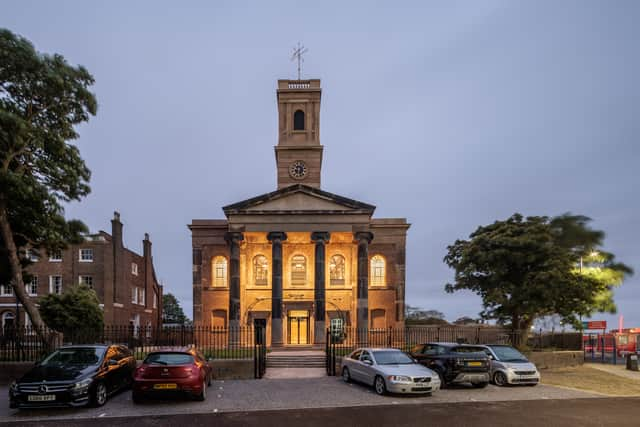South East landmarks that are deemed at risk include historic Sussex windmill and Canterbury park mound


A windmill that is more than 200 years old and a park mound that is the remains of a structure built under William the Conqueror are among the South East structures that are the latest to be deemed 'at risk.' According to Historic England, these two structures are among 159 buildings added to its Heritage at Risk Register.
Polegate Windmill in East Sussex and Dane John Mound in Canterbury are two of the South East structures that are at risk. A total of 203 sites have also been rescued and removed from the annually updated list on what marks the 25 anniversary of when it was first published by Historic England. Polegate is a picturesque brick-tower windmill that is said to be in 'urgent need of restoration'. Located on the edge of the South Downs, it stands four storeys tall and was built in 1817 for milling oats and was operated by wind power until 1942.


Advertisement
Hide AdAdvertisement
Hide AdRainwater leaking in from the cap and tower walls is causing damage to the large timber beams on all floors and eroding the mill’s brickwork. The beams, which support the heavy mill stones and internal mechanism, are currently propped. This means there is no public access to the tower but the mini-museum on the ground floor is open to visitors.
An active volunteer group is passionate about saving the building and fundraising for its repair. A comprehensive condition survey and work to improve the mill’s condition is also urgently needed.
Another building at risk in the South East is the Dane John Mound in Canterbury, Kent. It is located in a popular public park and has been added to the register due to the risk of erosion.
It is a prominent feature in Canterbury and is the remains of a medieval motte and bailey castle constructed under William the Conqueror’s rule, soon after the Norman invasion of 1066. The name Dane John may derive from a corruption of the French word ‘donjon’, meaning keep.


Advertisement
Hide AdAdvertisement
Hide AdThis would have been an ideal site for a castle, protected on two sides by the earlier Roman defensive wall. It is thought that the motte was built on top of an already existing burial mound. The site was later abandoned in favour of a new, stone castle built nearby – the ruins of Canterbury Castle still stand today.
The erosion at the site is largely down to the number of visitors it welcomes and the toll of this. As well as damaging the archaeological integrity of the motte, erosion towards the top risks undermining the Grade II listed Simmons memorial.
Dane John Park is included in the Levelling Up Fund money recently awarded to Canterbury City Council. The council's engineers and Historic England are working together to protect the Mound.
A South East landmark that was saved from being at risk is Sheerness Dockyard Church on the Isle of Sheppey in Kent. From roofless ruin to a beautifully restored landmark, the Dockyard Church reopened in 2023, twenty-two years after it was gutted by a devastating fire.


Advertisement
Hide AdAdvertisement
Hide AdThe former church has been transformed by the Sheerness Dockyard Preservation Trust into a new enterprise centre and cultural hub for the Isle of Sheppey. The £9.5m project was funded by The National Lottery Heritage Fund along with Historic England and many other partners.
Duncan Wilson, chief executive of Historic England said: “Protecting our heritage is so important. It is truly inspirational to see communities coming together to help save historic buildings and places and find new uses for them. "The Heritage at Risk programme shines a light on our historic sites most in need and can help to attract funding and help. After a quarter of a century of the Heritage at Risk Register, we are celebrating how many places have been saved and continue to find new ways to involve local people in caring for and enjoying their heritage.”
Historic England said there are 48 fewer total entries on the list compared with 2022, and around 6,800 entries have been removed since the list began in 1998.
Arts and Heritage Minister Lord Parkinson of Whitley Bay added: "For a quarter of a century, the Heritage at Risk Register has helped to focus efforts to preserve cherished sites across the country. It is heartening to see that so many sites have had their futures secured and have been taken off the Register over the past year thanks to the hard work of Historic England and local people.
"I look forward to the new additions to the Register receiving similar care and attention so that future generations can continue to enjoy and learn from our rich heritage for years to come."
Comment Guidelines
National World encourages reader discussion on our stories. User feedback, insights and back-and-forth exchanges add a rich layer of context to reporting. Please review our Community Guidelines before commenting.
